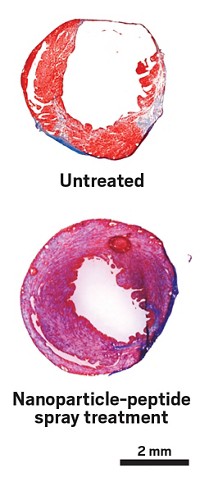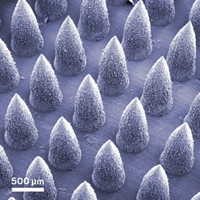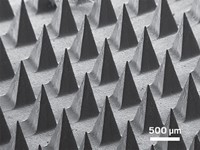Advertisement
Grab your lab coat. Let's get started
Welcome!
Welcome!
Create an account below to get 6 C&EN articles per month, receive newsletters and more - all free.
It seems this is your first time logging in online. Please enter the following information to continue.
As an ACS member you automatically get access to this site. All we need is few more details to create your reading experience.
Not you? Sign in with a different account.
Not you? Sign in with a different account.
ERROR 1
ERROR 1
ERROR 2
ERROR 2
ERROR 2
ERROR 2
ERROR 2
Password and Confirm password must match.
If you have an ACS member number, please enter it here so we can link this account to your membership. (optional)
ERROR 2
ACS values your privacy. By submitting your information, you are gaining access to C&EN and subscribing to our weekly newsletter. We use the information you provide to make your reading experience better, and we will never sell your data to third party members.
Pharmaceuticals
Microneedles patch into skin cancer
Patch allows for targeted delivery of nanoparticles loaded with promising drug
by Matt Davenport
April 4, 2016
| A version of this story appeared in
Volume 94, Issue 14

Researchers have designed a patch full of microscopic needles that inject therapeutic nanoparticles loaded with a promising immunotherapy directly into melanomas (Nano Lett. 2016, DOI: 10.1021/acs.nanolett.5b05030).
The nanoparticle formulation of the drug, an antibody known as anti-PD1, suppressed tumors more effectively in mice compared with conventional intravenous injections, reports the research team from North Carolina State University and the University of North Carolina, Chapel Hill.
Anti-PD1 inhibits the melanoma’s ability to avoid the body’s immune system. Ligands on melanoma cells bind to programmed cell death protein 1, or PD1, on the surface of T cells, effectively short-circuiting immune responses. If anti-PD1 binds to PD1 first, however, it disables the cancer’s defense.
But anti-PD1 can stimulate attacks against healthy cells as well, possibly leading to autoimmune disorders, including type 1 diabetes, says team leader Zhen Gu.
The team’s microneedle patch localizes the therapeutic to tissue affected by the melanoma, and the nanoparticle formulation allows for a sustained release of the drug, he explains. In the particles, anti-PD1 is encased in a matrix of modified dextran. The matrix also encapsulates glucose oxidase enzymes, which convert blood glucose into gluconic acid. The resulting acid degrades the modified dextran particles, releasing the anti-PD1 continuously over several days.





Join the conversation
Contact the reporter
Submit a Letter to the Editor for publication
Engage with us on Twitter